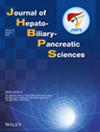Propensity Score-Matched Comparison of Robotic and Laparoscopic Pancreaticoduodenectomy
Abstract
Background
Robotic pancreaticoduodenectomy (RPD) has theoretical advantages over laparoscopic pancreaticoduodenectomy (LPD), offering enhanced dexterity with EndoWrist technology and improved ergonomics. This study aimed to compare surgical outcomes between RPD and LPD.
Methods
Patients undergoing minimally invasive pancreaticoduodenectomy, including 679 RPD and 94 LPD, were included for comparison before and after propensity score matching (PSM).
Results
After 1:1 PSM, 88 cases were analyzed in each group. The RPD group showed significantly shorter operation times (median: 7.5 vs. 11.0 h, p < 0.001). Complications were lower in the RPD group (46.6% vs. 65.9%, p = 0.010 overall; 9.1% vs. 19.3%, p = 0.010 for major complications with Clavien–Dindo ≥ III). Postoperative pancreatic fistula (POPF) was lower in the RPD group (3.4% vs. 12.5%, p = 0.026 for overall; 5.1% vs. 16.9%, p = 0.040 for soft parenchyma of pancreas; 4.1% vs. 16.7%, p = 0.042 for non-dilated pancreatic ducts). In the LPD group, all vascular resections required open conversion, whereas 42.9% of vascular resections were performed robotically in the RPD group (p = 0.013). There was no significant difference between RPD and LPD regarding intraoperative blood loss, conversion, vascular resection, surgical mortality, or survival outcomes.
Conclusions
RPD offers several advantages over LPD, including shorter operation time, lower morbidity, and reduced incidence of major complications and POPF, especially in patients with soft pancreas and non-dilated pancreatic ducts.


 求助内容:
求助内容: 应助结果提醒方式:
应助结果提醒方式:


